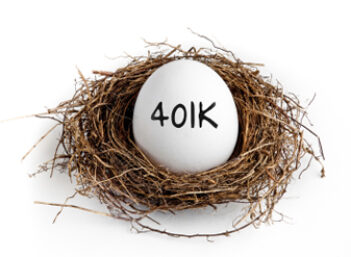You might think a young couple with a new baby would be concerned with every financial worry other than retirement -- but that's just not true.
Getting ahead of the retirement planning curve is essential while you're still young. That's why, as a 33-year-old new parent, I've done extensive research to figure out how to retire with a comfortable nest egg. I'd like to share my findings with you.
What I've learned is that achieving a financially comfortable retirement is not easy. According to a 2009 study carried out by the Employee Benefit Research Institute in Washington D.C., the percentage of people retiring with debt is rising.
A 2011 survey by the AARP Public Policy Institute found that approximately 15% of retired Americans had trouble paying their credit card bill, rent or mortgage. The situation is similar north of the border where I live. According to a 2011 Statistics Canada report, nearly 40% of Canadians over age 50 retire with some debt.
These numbers are expected to increase as the current slow growth economy continues to takes its toll. But, with proper planning and foresight, you can beat the odds.
The best way to ensure your future financial freedom is to start now. Here are some important financial steps you can take to prepare for your retirement:
Save Save Save
It's a simple concept. You can only build wealth if you spend less than you earn. The more you save, the richer you become. And, the longer you save, the more wealth you will accumulate. Saving is the ultimate key to wealth. But, it takes time and patience. Luckily, if you're still young, time is on your side. If, for example, you're currently age 33 and you save $100 per month until you are age 66, you will have saved $39,600 by retirement. Not bad!
Take On Risk While You're Young
If things go wrong, you have more time to earn it back. A simple rule of thumb is to subtract your age from 100 and put that amount in common stock. As a 33-year-old this maxim says I should have 67% of my savings allocated to common stocks.
It's important to diversify this allocation by investing in different market capitalization classes (small, mid- and large) and regions (domestic and international). This kind of diversification can be made easy by using exchange-traded funds (ETFs).
If you want to customize your investment profile beyond this simple rule, go to one of the many asset allocation calculators available on the web (I like this one from www.money-zine.com). After answering questions about my age, stock market knowledge and ability to handle risk, the calculator told me I should have 60% of my assets in stocks -- not far off from the age-based rule of thumb I gave above.
Use the Power of Compound Interest
If you put 60% of your savings into stocks that leaves 40% for fixed income investments such as bonds and money market funds. Here's where the power of compound interest comes in.
Compound interest is a wonderful friend to make while you're still young because it accumulates on the initial principal amount as well as the accrued interest. It's like an interest payment that increases over time. With compound interest, the longer you save, the more you'll end up with. Consider this example: Let's say at age 33, I make a one-time $7,500 contribution to my 401 (k) plan -- which earns an average 5% annual return.
By the time I'm 65 that money will have grown into $35,737. I tell my friend's brother about the power of compound interest and he decides to make a similar investment. But, at age 45, his initial amount only turns into $19,899 by retirement, about half of what I receive. I may be younger, but I'm wiser -- and richer.
[Einstein called compounding 'the greatest mathematical discovery of all time.' Read more about how it works in How One Normal Lady Turned $200 into $7 Million.]
Consolidate Any Debts
If you've been through school, married, bought a house or started a family, you've likely incurred debt. Digging yourself out of this debt probably takes precedence to your retirement saving. But, both can go hand-in-hand.
A simple way to manage your finances is to consolidate your debt. Doing so can best be achieved by moving multiple outstanding loans and payments to one place, such as a bank. Check to ensure this centralized 'location' offers the absolutely lowest interest rate available. Reducing the interest will allow you to pay off the principle faster. Doing so will reduce your repayment period so you can start putting money toward your savings sooner.
The Investing Answer: Saving money, investing and taking advantage of the power of compound interest are fundamental aspects of a financially healthy retirement. But, good retirement planning also means envisioning your desired future. Start now! Consider what you want your retirement to look like, based on your individual needs and values. Envision your family, health, home, lifestyle, business. Rank your top priorities. Then take the steps I've just described above to achieve your vision.
Don't look back on your life with regret. Taking action now -- while you're still young -- will enable you to successfully work toward achieving your retirement dreams.



